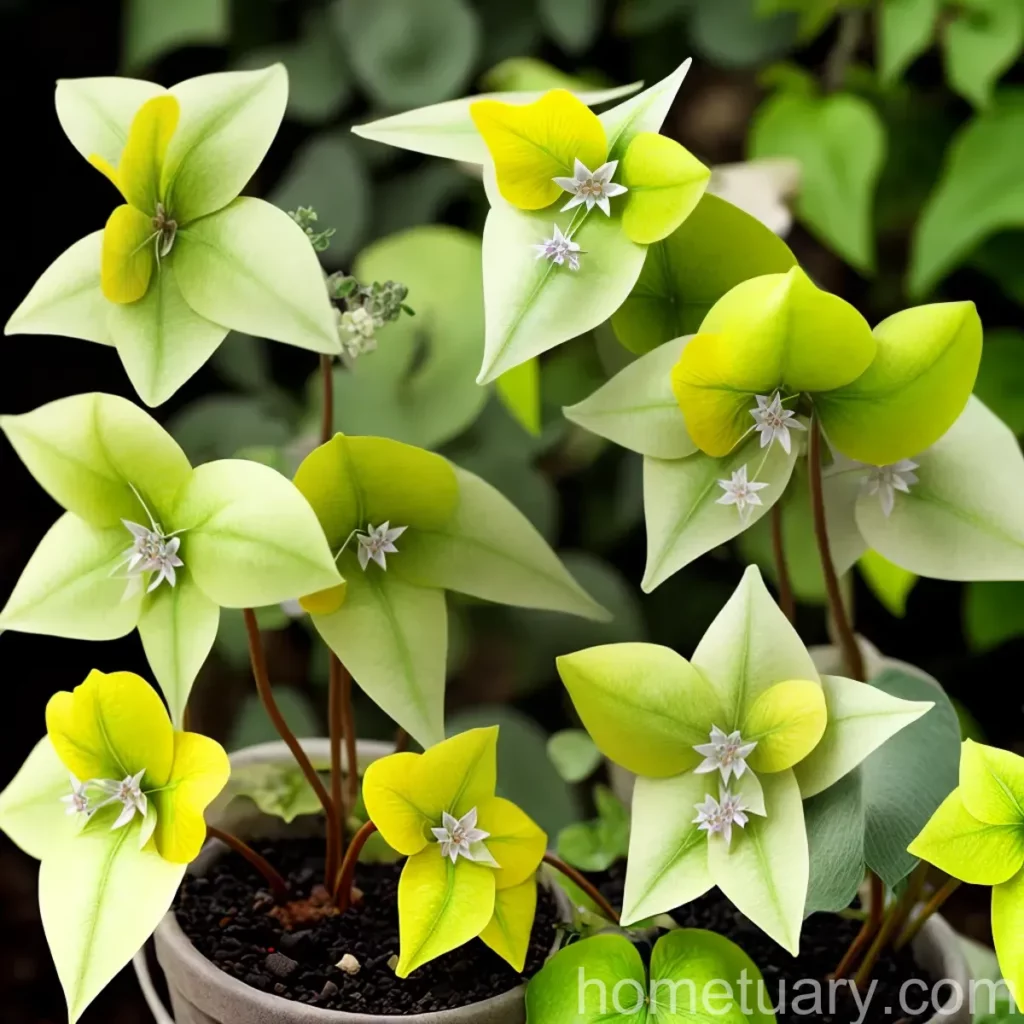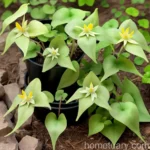The Bishop’s Hat Plant (Epimedium stellulatum): A Comprehensive Guide to Cultivation, Care, and Uses
The world of plants offers an incredible diversity of species, each with its unique characteristics and uses. In this comprehensive guide, we will explore the fascinating plant known as the Bishop’s Hat (Epimedium stellulatum). From its description and cultivation requirements to its medicinal uses and landscape benefits, this article aims to provide an in-depth understanding of this remarkable plant. Whether you are a seasoned gardener, a landscaping enthusiast, or simply someone with an appreciation for the beauty of nature, this guide will equip you with the knowledge to cultivate and care for Bishop’s Hat plants successfully.
What is the Bishop’s Hat Plant (Epimedium stellulatum)?
The Bishop’s Hat, scientifically known as Epimedium stellulatum, is a charming perennial plant that belongs to the Berberidaceae family. This delicate yet resilient plant is renowned for its ornamental foliage and dainty flowers, making it a sought-after addition to shaded gardens, woodland areas, and rock gardens. The common name “Bishop’s Hat” derives from the distinctive shape of its leaves, which resemble the traditional headwear worn by bishops.
Epimedium stellulatum Description
- Taxonomy: Epimedium stellulatum is classified under the genus Epimedium, which comprises over 60 species of herbaceous perennials. The species name “stellulatum” is derived from the Latin word “stellatus,” meaning “starry,” which alludes to the star-shaped flowers of the plant.
- Growth Habit: This low-growing perennial forms spreading clumps of heart-shaped leaves and delicate flower stems that elevate the enchanting blooms above the foliage.
- Foliage: The foliage of Epimedium stellulatum is semi-evergreen, with leaves that emerge in early spring and develop into attractive mottled patterns in various shades of green, bronze, and red during the growing season.
- Flowers: The dainty flowers of the Bishop’s Hat are star-shaped and can appear in a spectrum of colors, including soft yellows, pinks, and purples. These blossoms add a delicate touch to the garden in late spring to early summer.
Now that we have gained a brief insight into the captivating characteristics of the Bishop’s Hat plant, let’s delve deeper into its cultivation, care, and various aspects of its usage.
Key Takeaways – Bishop’s Hat (Epimedium stellulatum)
Culture
- Hardiness Zone: Epimedium stellulatum is typically suitable for hardiness zones 5 to 8, though specific varieties may exhibit different hardiness ranges. Before cultivation, it is essential to verify the specific hardiness zone recommendations for the selected variety.
- Growth Rate: The Bishop’s Hat plant has a moderate growth rate and is known for its resilience in shady or partially shaded environments.
- Landscape Use: This species is a versatile ornamental plant and is commonly utilized in woodland gardens, shaded borders, and as a ground cover beneath trees.
Uses
- Ornamental Value: The Bishop’s Hat is highly valued for its ornamental foliage and delicate flowers, making it a popular choice for adding visual interest to shaded or partially shaded outdoor spaces.
- Medicinal Uses: Some species within the Epimedium genus are traditionally used in herbal medicine for their potential aphrodisiac properties and as a tonic for supporting reproductive health. However, it is essential to consult with a qualified healthcare professional before using any plant for medicinal purposes.
Water
- Watering Needs: Bishop’s Hat plants generally prefer consistently moist, well-draining soil. While they can tolerate dry periods once established, they thrive when provided with regular moisture, especially during the active growing season.
Sunlight
- Light Requirements: Epimedium stellulatum thrives in partial to full shade, making it an ideal choice for shaded gardens and areas with dappled sunlight.
Fertilizer
- Fertilization: A balanced, organic fertilizer applied in early spring can support healthy growth and flowering. It is advisable to follow the specific fertilizer recommendations for the Bishop’s Hat species being cultivated.
Soil
- Soil Conditions: Well-draining, humus-rich soil with a slightly acidic to neutral pH is preferable for Bishop’s Hat plants. Amending the soil with organic matter can enhance its moisture retention and nutrient content.
Pruning
- Pruning Techniques: In late winter or early spring, the removal of old foliage and stems can promote vigorous new growth and prevent the buildup of debris around the plant crown. Pruning can also help maintain a tidy appearance and encourage prolific flowering.
Propagation
- Propagation Methods: Bishop’s Hat plants can be propagated by division, seed sowing, or through rhizome cuttings. Each method has its specific requirements and is suitable for different times of the year.
Container Popularity
- Container Gardening: Due to its moderate size and shade tolerance, the Bishop’s Hat can thrive in containers placed in shaded patios, balconies, or outdoor living spaces. Container gardening offers flexibility in creating shaded garden displays in various outdoor settings.
The Bishop’s Hat (Epimedium stellulatum) holds considerable appeal for plant enthusiasts and landscaping professionals due to its captivating features and adaptability to shaded environments. Next, let’s explore some common diseases, pest concerns, and essential care tips for ensuring the optimal health and vitality of these remarkable plants.
Common Diseases and Disease Diagnosis
Disease Resistance
- Fungal Diseases: While Bishop’s Hat plants are generally resistant to many common fungal diseases, maintaining proper air circulation and avoiding overhead watering can help prevent issues such as powdery mildew and leaf spot.
Disease Diagnosis
- Symptoms: Yellowing or browning of foliage, distorted growth, and the presence of fungal growth on leaves or stems are common signs of potential disease issues in Bishop’s Hat plants.
- Preventive Measures: Regular monitoring, proper spacing to encourage air circulation, and avoiding excessive moisture on foliage can contribute to disease prevention.
Common Pests
Pest Control
- Deer Resistance: In some regions, Bishop’s Hat plants are valued for their relative resistance to browsing by deer, making them an attractive option for landscapes prone to deer damage.
- Insect Pests: While generally resistant to many common pests, Bishop’s Hat plants can occasionally experience issues with aphids, scale insects, and snails. Regular inspection and appropriate pest control measures can help manage these potential concerns.
The cultivation and maintenance of Bishop’s Hat plants are significantly enhanced by understanding and addressing potential disease and pest-related issues. By implementing suitable preventive measures and prompt management practices, growers can ensure the long-term health and vigor of these enchanting perennials.
Botanist’s Tips
Expert Recommendations
- Species Selection: Consider selecting Bishop’s Hat varieties that are well-suited to the specific growing conditions and climate of your region to optimize their performance and longevity.
- Mulching: Applying a layer of organic mulch around Bishop’s Hat plants can help conserve soil moisture, suppress weed growth, and provide insulation for the roots during temperature fluctuations.
Fun Facts
- The genus name “Epimedium” is said to be derived from the Greek word “epimedion,” which was used to refer to plants with potential aphrodisiac properties, alluding to the traditional medicinal uses associated with some Epimedium species.
- Bishop’s Hat plants are often favored for their ability to naturalize in woodland settings, forming charming colonies beneath trees and along shaded pathways.
Discovering fascinating and lesser-known aspects of plants can deepen our appreciation for the natural world and the contributions of diverse plant species to our lives and landscapes. Now that we have explored the cultural significance, cultivation essentials, and common concerns related to Bishop’s Hat plants let’s further enrich our understanding through external resources and additional insights from the field of plant science.
Links to External Resources
- American Horticultural Society
- Botanical Society of America
- Royal Horticultural Society
- Missouri Botanical Garden
- The Morton Arboretum
In conclusion, the Bishop’s Hat (Epimedium stellulatum) stands as a captivating and valuable addition to shaded gardens, woodland landscapes, and outdoor environments with partial to full shade. By embracing the insights and recommendations shared in this guide, plant enthusiasts and gardening aficionados can embark on a rewarding journey of cultivating, caring for, and cherishing these remarkable plants. The intrinsic beauty, adaptability, and eco-cultural significance of Epimedium stellulatum underscore its enduring appeal, inspiring us to further explore and celebrate the diversity of plant life in our world.
Epimedium stellulatum Keywords:
- Epimedium stellulatum description
- Bishop’s hat plant characteristics
- Growing Epimedium stellulatum
- Bishop’s hat plant care tips
- Epimedium stellulatum varieties
- Bishop’s hat flower colors
- Epimedium stellulatum cultivation
- Bishop’s hat plant maintenance
- Epimedium stellulatum planting guide
- Bishop’s hat plant propagation















